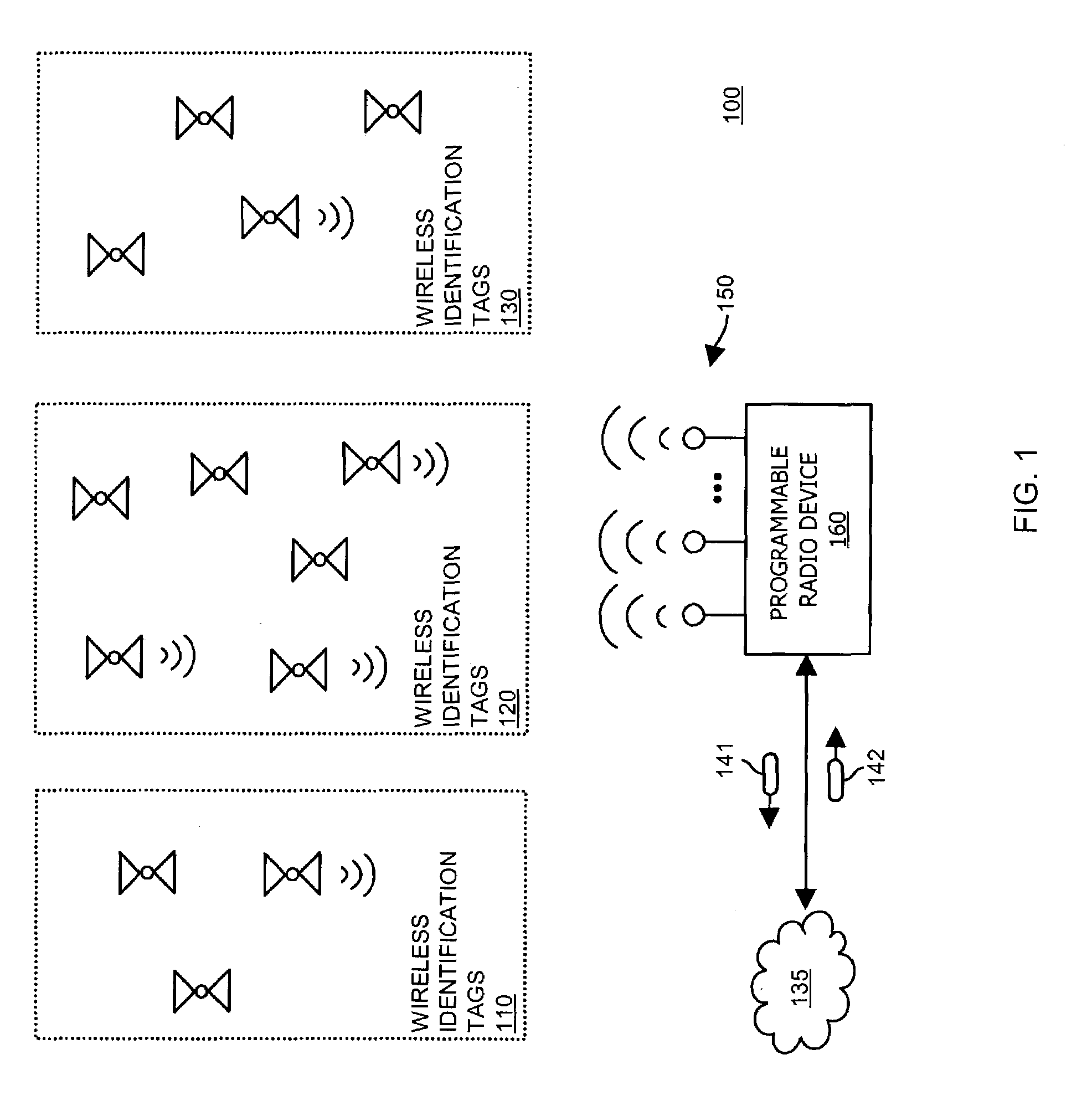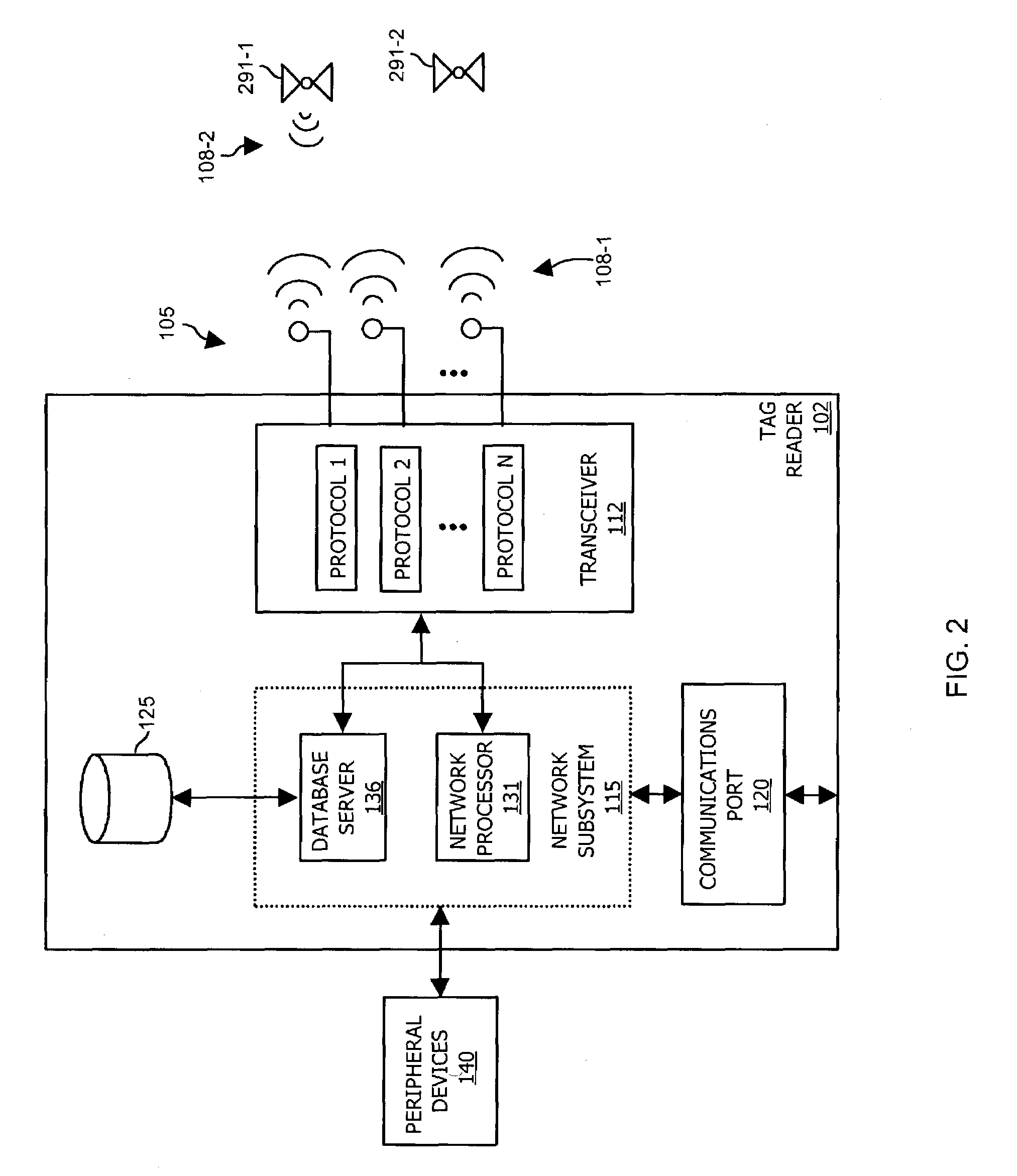Methods and apparatus for operating a radio device
a radio device and radio technology, applied in the field of radio device operation methods and apparatus, can solve the problems of inability to generate a wireless signal independently to communicate with a tag reader or process digital information on their own, and the cost of outfitting a facility with a tag reader, so as to increase the efficiency of monitoring wireless tags
- Summary
- Abstract
- Description
- Claims
- Application Information
AI Technical Summary
Benefits of technology
Problems solved by technology
Method used
Image
Examples
Embodiment Construction
[0038]As discussed in the summary above, one aspect of the present invention is directed to a radio device such as a tag reader that communicates with multiple types of wireless identification tags in a monitored region. The radio device includes a network interface to receive messages transmitted over a network. In response to receiving a message indicating to reconfigure the radio device to support an additional protocol, the radio device is reconfigured to support communications with a corresponding additional type of wireless identification tag in a monitored region. In addition to a network interface, each radio device includes a database to manage and store information associated with multiple types of wireless identification tags.
[0039]As an example, radio devices can be multiple tag readers interconnected via a network to form a distributed system. Each tag reader in such a system is responsible for managing its local population of wireless identification tags. For example, ...
PUM
 Login to View More
Login to View More Abstract
Description
Claims
Application Information
 Login to View More
Login to View More - R&D
- Intellectual Property
- Life Sciences
- Materials
- Tech Scout
- Unparalleled Data Quality
- Higher Quality Content
- 60% Fewer Hallucinations
Browse by: Latest US Patents, China's latest patents, Technical Efficacy Thesaurus, Application Domain, Technology Topic, Popular Technical Reports.
© 2025 PatSnap. All rights reserved.Legal|Privacy policy|Modern Slavery Act Transparency Statement|Sitemap|About US| Contact US: help@patsnap.com



